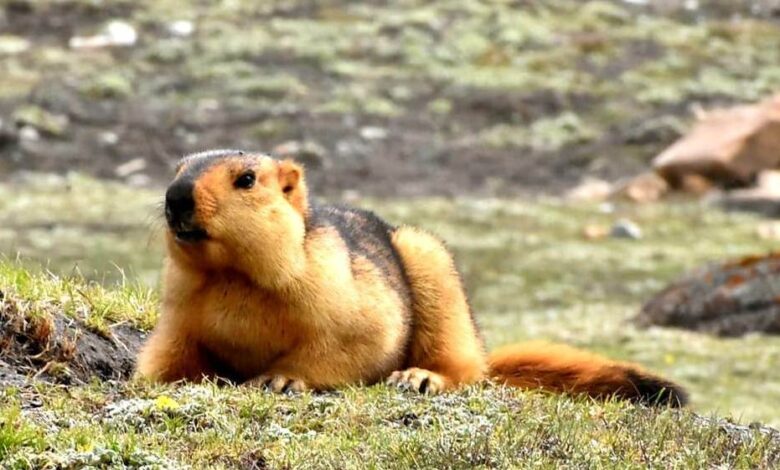Spurt in tourist activists threaten Himalayan Marmot in Jolingkong area of Adi Kailash

Spurt in tourist activists threaten Himalayan Marmot in Jolingkong area of Adi Kailash
B.D.Kasniyal
Pithoragarh, July 24
The habitat of Himalayan Marmot, a mammal dwelling in higher Himalayan region (Marmota Himalayan), between 4420 to 4450 meter high region of Jolingkong region of ‘Adi Kailash’ area in Pithoragarh district of Uttarakhand is shrinking. A threat to its existence has been posed due to spurt of recent tourism in the region after the visit of Prime Minister Narendra Modi to the area in October m2023. It has been found in a recent study conducted by research wing of Uttarakhand forest department.
“Throughout the survey from April to June this year, conducted near Jolingkong village, the observing team sighted 17 Marmots and recorded key behaviour of the species, like digging burrows, standing upright posture play fight and vigilance during foraging,” said Sanjeev Chaturvedi, head of the research wing and Chief Conservator of Forest in Uttarakhand.
According to Chaturvedi, the existence to this rare species is threatened by spurt in number of tourists to the area besides, expansion of tourism infrastructure like roads, hotels, lodges and trekking toutes.”Uur study found that this spurt has resulted in habitat fragmentation, encroaching marmot burrows and even affecting their foraging grounds,” said Chaturvedi.
Referring the finding of the study, the CCF said that if not checked, these developments could isolate the Marmot population, reduce genetic diversity, and disrupt their daily routine.” If not checked properly in time, these can increase their vulnerability to environmental changes and to predators,” said the research wing head.
According to the study, improper disposal of food waste by tourists in the Marmot habitat area could also make Marmots habituated to human food thus reducing their foraging instinct.
According to study, proactive measures have been recommended. These included, to adopt scientific conservation strategies, adopting sustainable tourism practices, proper waste management practices and avoiding habitat of marmots in tourist tracks.




